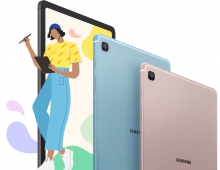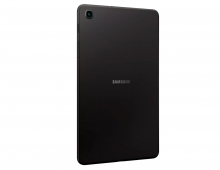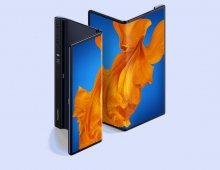
4K Tablets Are On The Way
While the 4K LCD TV is a rising star in the TV market, and we also see 4K panels emerging in the monitor and notebook PC markets. Panel makers are also developing 4K smartphone panels. Will we also see the first 4K tablet PCs soon?
There are panel makers developing 4K tablet PC panels. Japan Display is one of the most aggressive, as it has already shiped samples of a 10.1" 4K panel for tablet PCs, made using LTPS technology at its Gen 6 fab in Mobara. Sharp and LG Display are also developing 4K tablet PC LTPS panels.
Japan Display (JDI) developed a 12.1" 4K LCD module (resolution density 365 ppi) and presented it at the FPD International 2013 in Japan. The new 10.1" product is an LCD module with an even higher resolution (438 ppi).
The highest resolution available for tablet PCs is 364 ppi, but JDI's 10.1' 4K will be 438 ppi, thus raising bar for tablet PCs above 400 ppi.
Japan Display will eventually move its panel to mass production, so it seems that achieving a 4K tablet PC is not an issue. However, it is uncertain whether the tablet PC ecosystem, especially components, is ready to adapt to a 4K display.
Many smartphone components, such as the application processor, camera module, camera image sensor, backlight, and driver ICs, are the same as those in tablet PCs, so the question will become that whether the 4K smartphone components can be used in tablet PCs as well.
According to David Hsieh, Vice President, Greater China Market for DisplaySearch, the following supply chain components must be considered:
- The main application processor makers for tablet PCs are Intel, Qualcomm, NVidia, and MediaTek. Intel's Cherry Trail Z4xxx series will support a 4K@24 display in 1H?15. 4K video decoding and encoding is already available on Qualcomm's 8974, and its Snapdragon 805 CPU will support a 4K@30 display. NVidia's K1 will be ready at the end of this year or beginning of next year, supporting not only 4K video procession but also an external 4K display. MediaTek's processors support 4K video rendering on smartphones but not tablets yet. MediaTek has no plans yet to support an external display with 4K.
- Each layer of 4K of a smartphone or tablet user interface is around 2 GB per second. Some devices can use six layers, including the background image and status bar, requiring greater capacity and faster memory. Experts say LPDDR3 memory is good enough, while 2?64-bit up to 4 GB is best; 1?64-bit 2 GB can work, but it increases power consumption.
- A 4K image has 8.3 megapixels, so the number of pixels is no problem for the camera and CIS, but how efficiently an application processor can handle such a huge amount of image data is an issue.
- Intel is the only company that has said its application processor (Cherry Trail) will support both the eDP and MIPI interface. We can only assume that the other application processors will support both interfaces on tablets. On smartphones, they only support MIPI because it is the main interface for that application. The bandwidth and data for 4K is almost four times that of FHD. MIPI and VESA just announced a one-third compression standard, and it will be the 4K interface. Until this new standard matures, driver IC makers are using two chips to manage the high-speed interface on tablet PC panels, which means using a 2?WQHD/WQXGA driver IC.
- For a 9" 4K display, the pixel density is about 489 ppi. If it is an LTPS or IGZO panel then the transmittance of the backlight will be around 3-4%. If brands and panel makers require 400 nits, then the backlight brightness must be 10,000-13,500 nits. BLU makers already support 14,000 nits on a smartphone panel with a slim border panel structure, so we assume they can support on a tablet PC as well.
Japan Display (JDI) developed a 12.1" 4K LCD module (resolution density 365 ppi) and presented it at the FPD International 2013 in Japan. The new 10.1" product is an LCD module with an even higher resolution (438 ppi).
The highest resolution available for tablet PCs is 364 ppi, but JDI's 10.1' 4K will be 438 ppi, thus raising bar for tablet PCs above 400 ppi.
Japan Display will eventually move its panel to mass production, so it seems that achieving a 4K tablet PC is not an issue. However, it is uncertain whether the tablet PC ecosystem, especially components, is ready to adapt to a 4K display.
Many smartphone components, such as the application processor, camera module, camera image sensor, backlight, and driver ICs, are the same as those in tablet PCs, so the question will become that whether the 4K smartphone components can be used in tablet PCs as well.
According to David Hsieh, Vice President, Greater China Market for DisplaySearch, the following supply chain components must be considered:
- The main application processor makers for tablet PCs are Intel, Qualcomm, NVidia, and MediaTek. Intel's Cherry Trail Z4xxx series will support a 4K@24 display in 1H?15. 4K video decoding and encoding is already available on Qualcomm's 8974, and its Snapdragon 805 CPU will support a 4K@30 display. NVidia's K1 will be ready at the end of this year or beginning of next year, supporting not only 4K video procession but also an external 4K display. MediaTek's processors support 4K video rendering on smartphones but not tablets yet. MediaTek has no plans yet to support an external display with 4K.
- Each layer of 4K of a smartphone or tablet user interface is around 2 GB per second. Some devices can use six layers, including the background image and status bar, requiring greater capacity and faster memory. Experts say LPDDR3 memory is good enough, while 2?64-bit up to 4 GB is best; 1?64-bit 2 GB can work, but it increases power consumption.
- A 4K image has 8.3 megapixels, so the number of pixels is no problem for the camera and CIS, but how efficiently an application processor can handle such a huge amount of image data is an issue.
- Intel is the only company that has said its application processor (Cherry Trail) will support both the eDP and MIPI interface. We can only assume that the other application processors will support both interfaces on tablets. On smartphones, they only support MIPI because it is the main interface for that application. The bandwidth and data for 4K is almost four times that of FHD. MIPI and VESA just announced a one-third compression standard, and it will be the 4K interface. Until this new standard matures, driver IC makers are using two chips to manage the high-speed interface on tablet PC panels, which means using a 2?WQHD/WQXGA driver IC.
- For a 9" 4K display, the pixel density is about 489 ppi. If it is an LTPS or IGZO panel then the transmittance of the backlight will be around 3-4%. If brands and panel makers require 400 nits, then the backlight brightness must be 10,000-13,500 nits. BLU makers already support 14,000 nits on a smartphone panel with a slim border panel structure, so we assume they can support on a tablet PC as well.





















